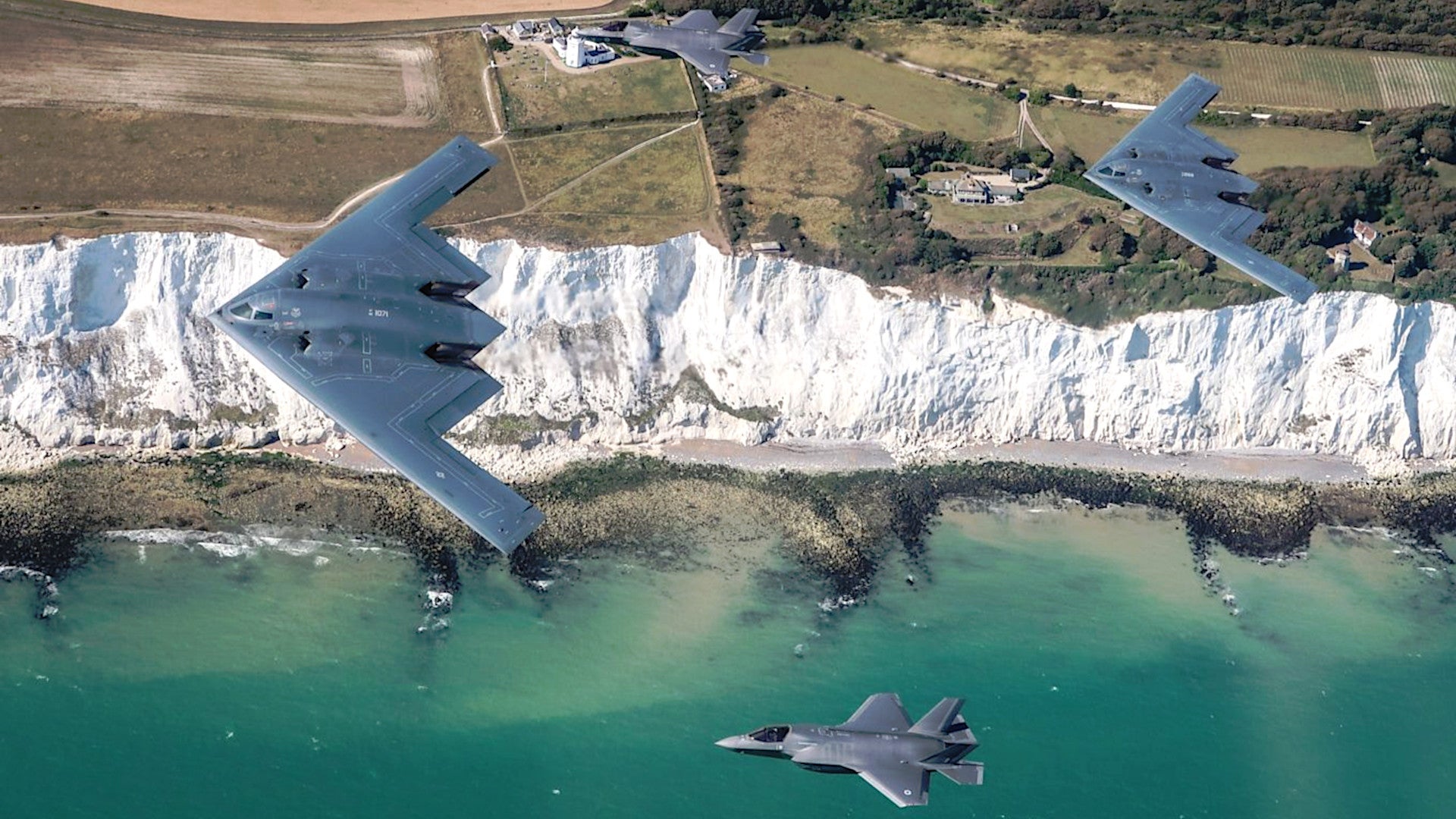Three U.S. Air Force B-2 Spirit stealth bombers are in the United Kingdom to conduct various training exercises in the region and one of them recently made a very significant first-ever visit to Iceland. Now, in another notable first, a pair of the flying-wing bombers have taken to the skies together with two of the U.K. Royal Air Force’s F-35B Joint Strike Fighters.
The integration training flight off the coast of Dover in the United Kingdom actually took place on Aug. 29, 2019, though the Royal Air Force and U.S. Air Forces in Europe only announced it today. In addition to this being the first time that RAF F-35Bs have flown with B-2s, it is also the first time the bombers have flown with any F-35s from a foreign air force. The three B-2s first arrived at RAF Fairford on Aug. 27, 2019.
“This flying integration builds on the work of Exercise Lightning Dawn in Cyprus and the visit of RAF F-35 Lightning to Italy … where in both cases it had the opportunity to prove itself among other NATO allies who also operate the aircraft,” U.K. Defense Minister Mark Lancaster said in a statement. “NATO is the bedrock of Euro-Atlantic defense, and those secure foundations continue to be reinforced by the training exercises being completed between the Royal Air Force and our special friends in the US Air Force.”
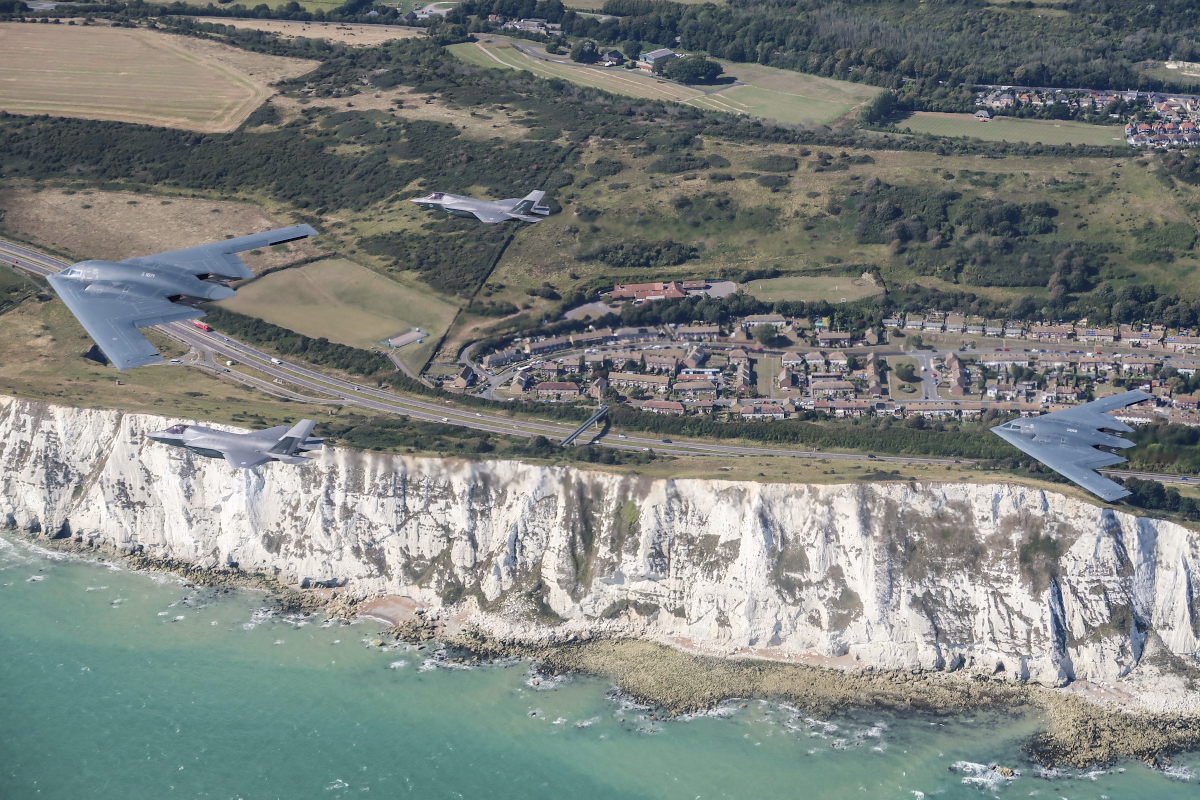
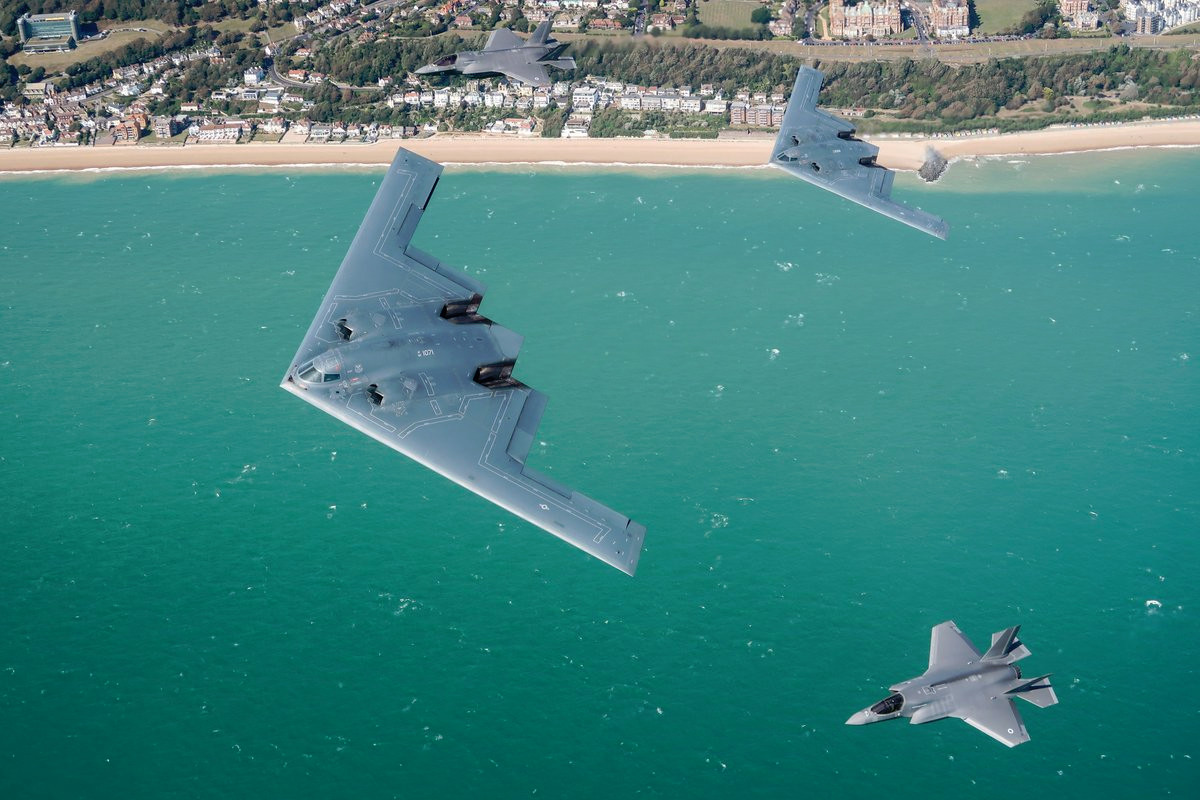
The RAF conducted Exercise Lightning Dawn in April 2019 and subsequently deployed its F-35Bs for actual combat operations over Iraq or Syria two months later. In July 2019, the RAF’s Joint Strike Fighters, together with F-35s from the U.S. and Italian Air Forces, took part in another first-of-its-kind training exercise.
A core component of the multi-national F-35 program has been about enabling the different operators, particular those of whom are NATO members, to further increase their ability to conduct operations together and exchange information using the jet’s powerful sensor fusion capabilities. That latter point means that Joint Strike FIghters will be able to “quarterback” and act as key leaders during future coalition operations.
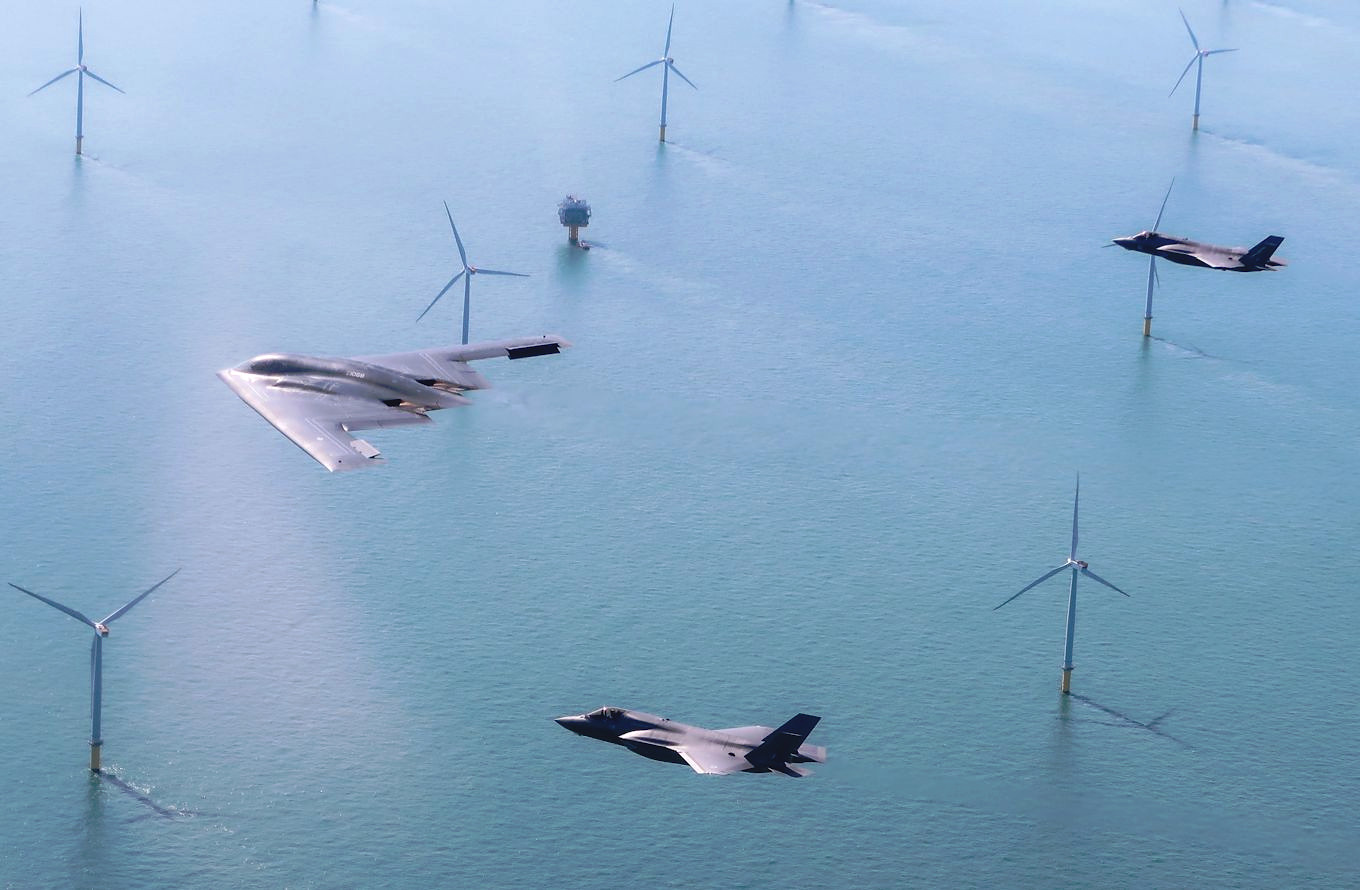
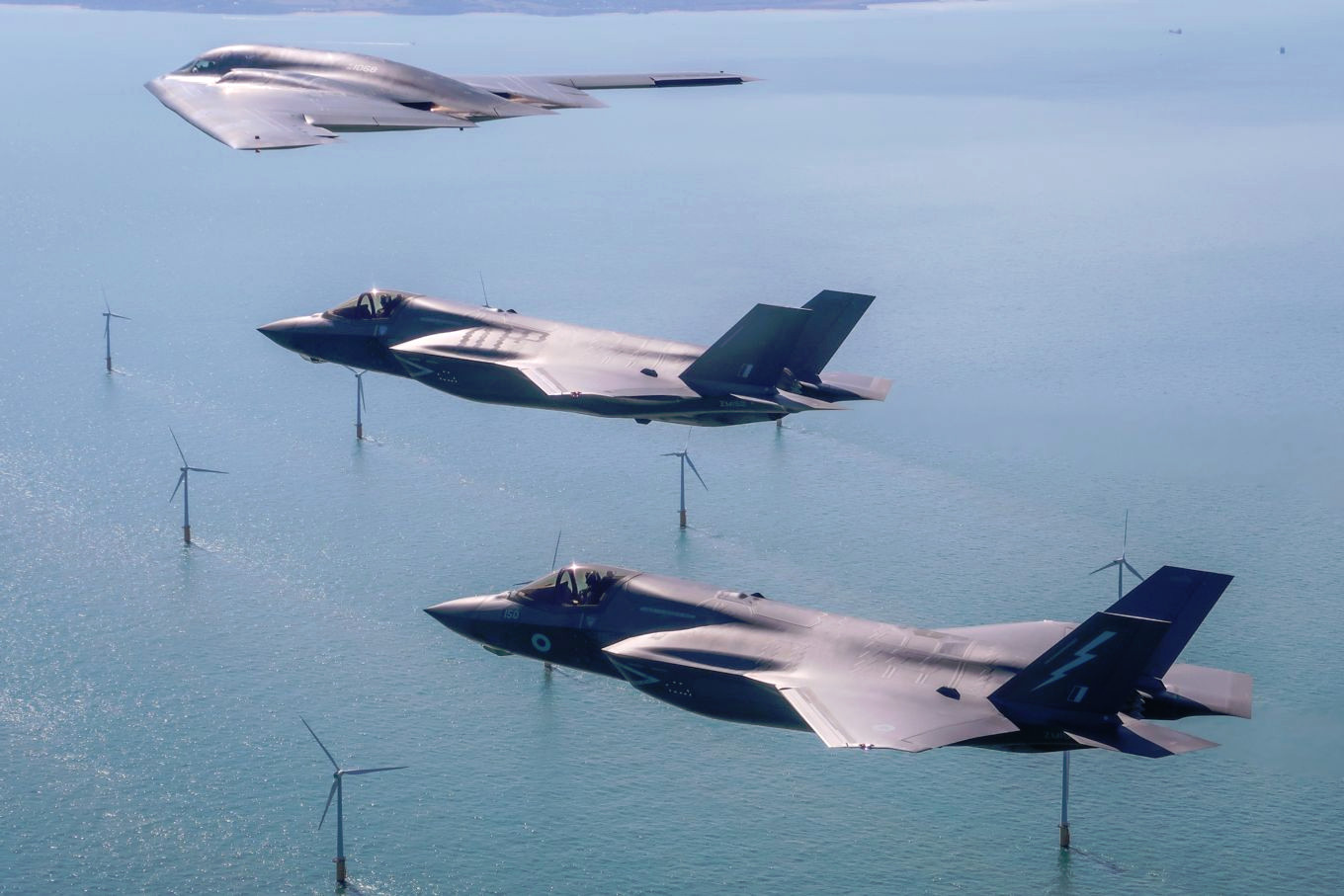
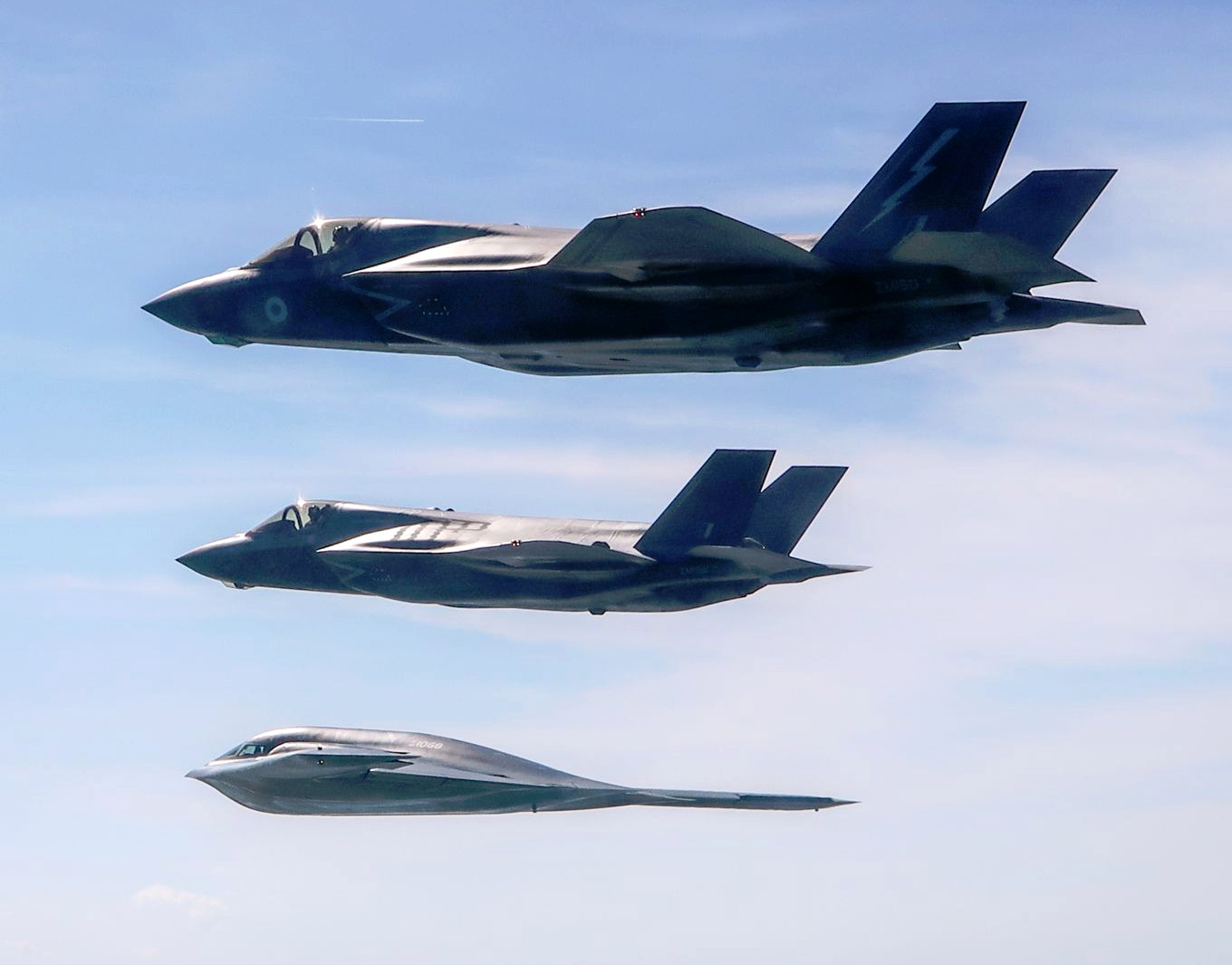
In the United Kingdom has been especially keen to explore the expanding potential for cooperation that the Joint Strike Fighters afford. U.S. Marine Corps F-35Bs have been training alongside their British counterparts already ahead of plans to deploy onboard the first-in-class aircraft carrier HMS Queen Elizabeth when it sets out on its inaugural operational deployment, which is slated to occur in 2021. The ship is presently on its way to the United States where it will embark front-line Marine F-35Bs for the first time for operational trials to support preparations for that cruise.
In addition, F-35s, as with other fifth-generation fighter jets, are expected to operate in areas that are too dangerous for non-stealth aircraft to venture. The B-2s, as well as the future B-21 Raider stealth bombers, also exist to provide the ability to strike targets deep within dense hostile air defense networks. As such, it is possible that future coalition operations, including those with NATO members in the lead, could include F-35s and B-2s operating in these denied areas where it could be important for them to understand how to at least coordinate their activities.
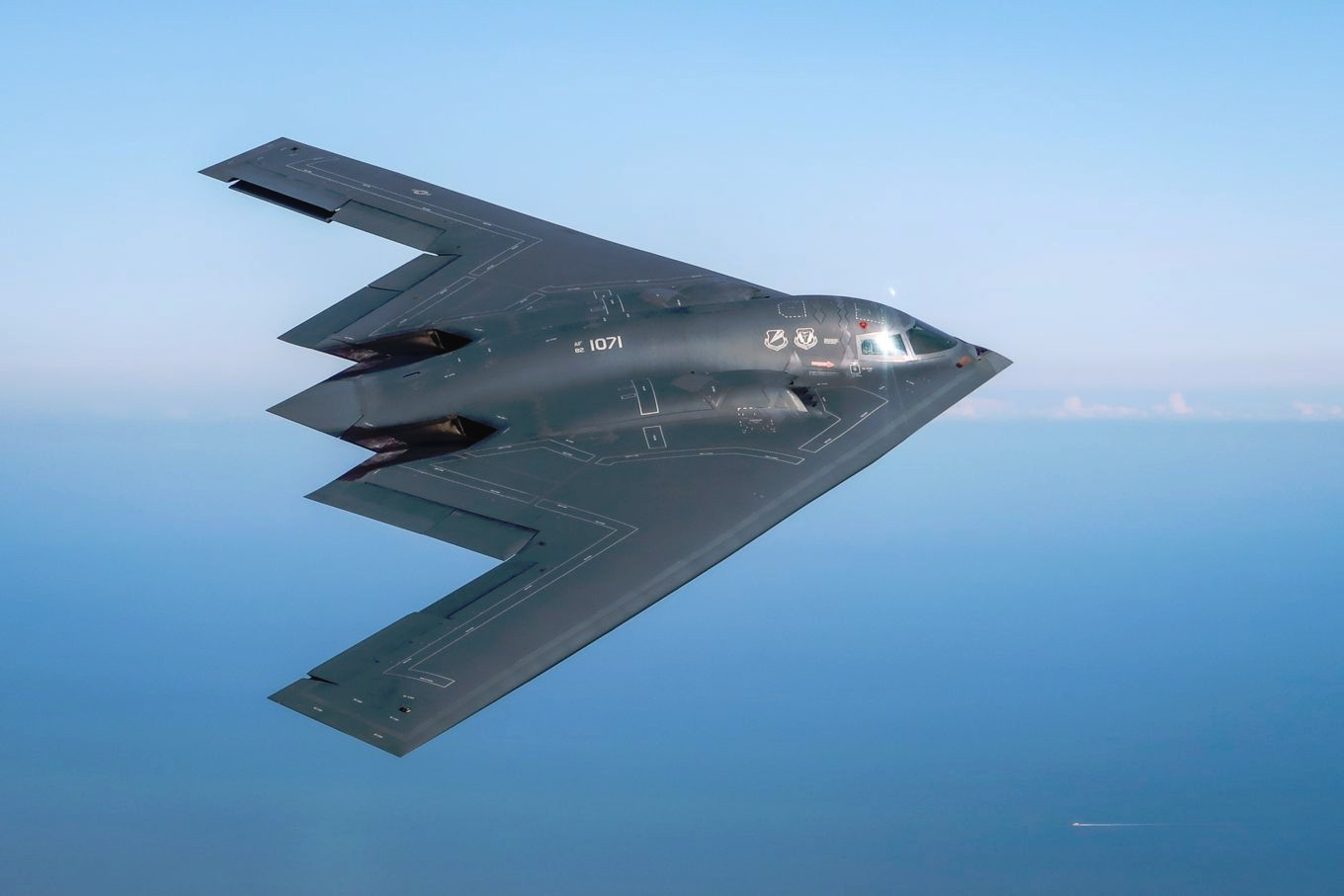
“Our Royal Air Force friends are integral to the 509th Bomb Wing mission,” U.S. Air Force Lieutenant Colonel Rob Schoeneberg, a member of the Wing’s 393rd Bomb Squadron and the commander of the Bomber Task Force presently at RAF Fairford, said in his own statement about the training mission. “The beauty of our partnerships is that we get to understand how they see the world. Working alongside international fifth-generation aircraft provides unique training opportunities for us, bolsters our integration capabilities, and showcases the commitment we have to our NATO alliance.”
Beyond the immediate value of the integration training, as Lieutenant Colonel Schoeneberg noted, sorties involving one of America’s most capable combat aircraft together with the most advanced jets now in service within NATO, send a general signal about the alliance’s capabilities. The United States has already stepped up routine deployments of B-2s and other bombers to Europe in recent years, primarily as part efforts to deter any potential Russian aggression and reassure allies and partners in the region.
At the same time, they have become visible parts of major training exercises across Europe, including the B-2’s very public first-ever visit to Iceland just this week. As The War Zone already highlighted at the time, sending the stealth bomber there was a significant demonstration of the Air Force’s efforts to explore and expand its ability to use less common locations to support operations involving its most advanced combat aircraft. This could be especially important during a future high-end conflict or other crisis in which established bases, such as RAF Fairford, may become unavailable.

All told, as NATO members, including the United States, continue to deploy more and more F-35s and integrate them into their routine operations, and if American bomber deployments to the region continue as they have been, it seems likely that we will only see more exercises that involve cooperation and coordination between them in the future.
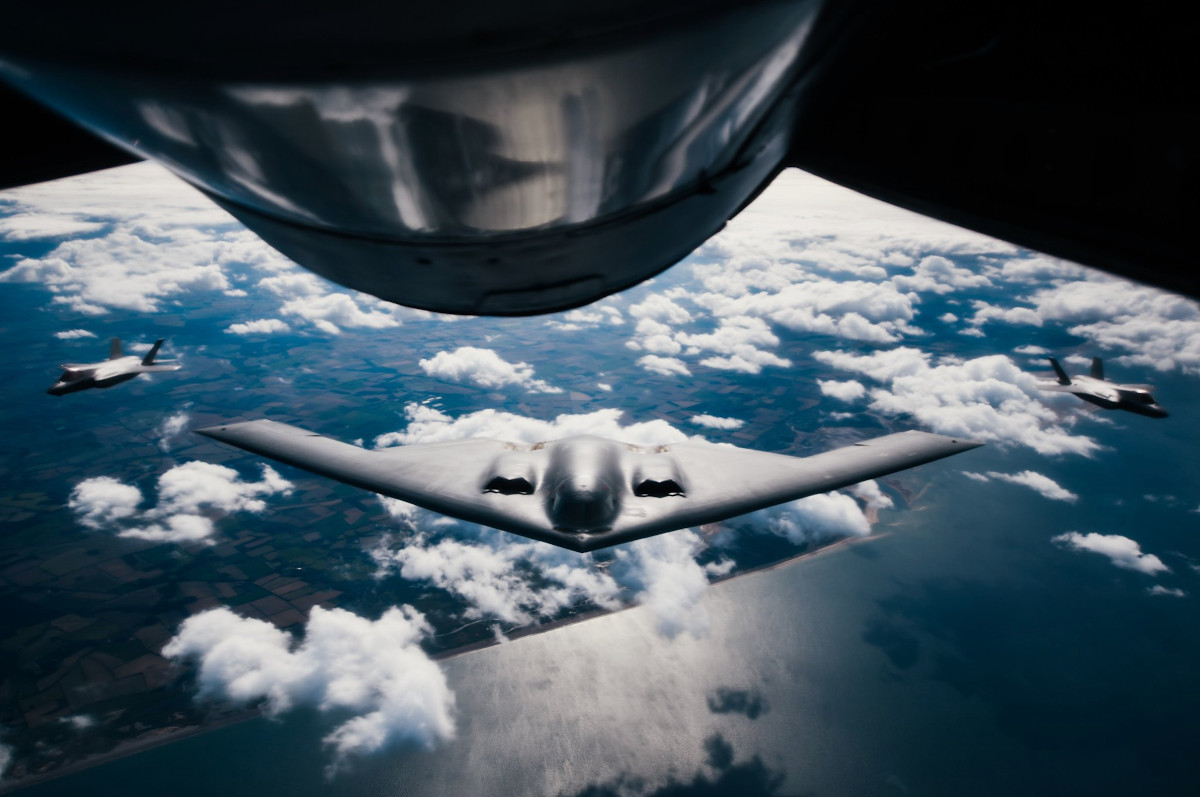
Contact the author: joe@thedrive.com
